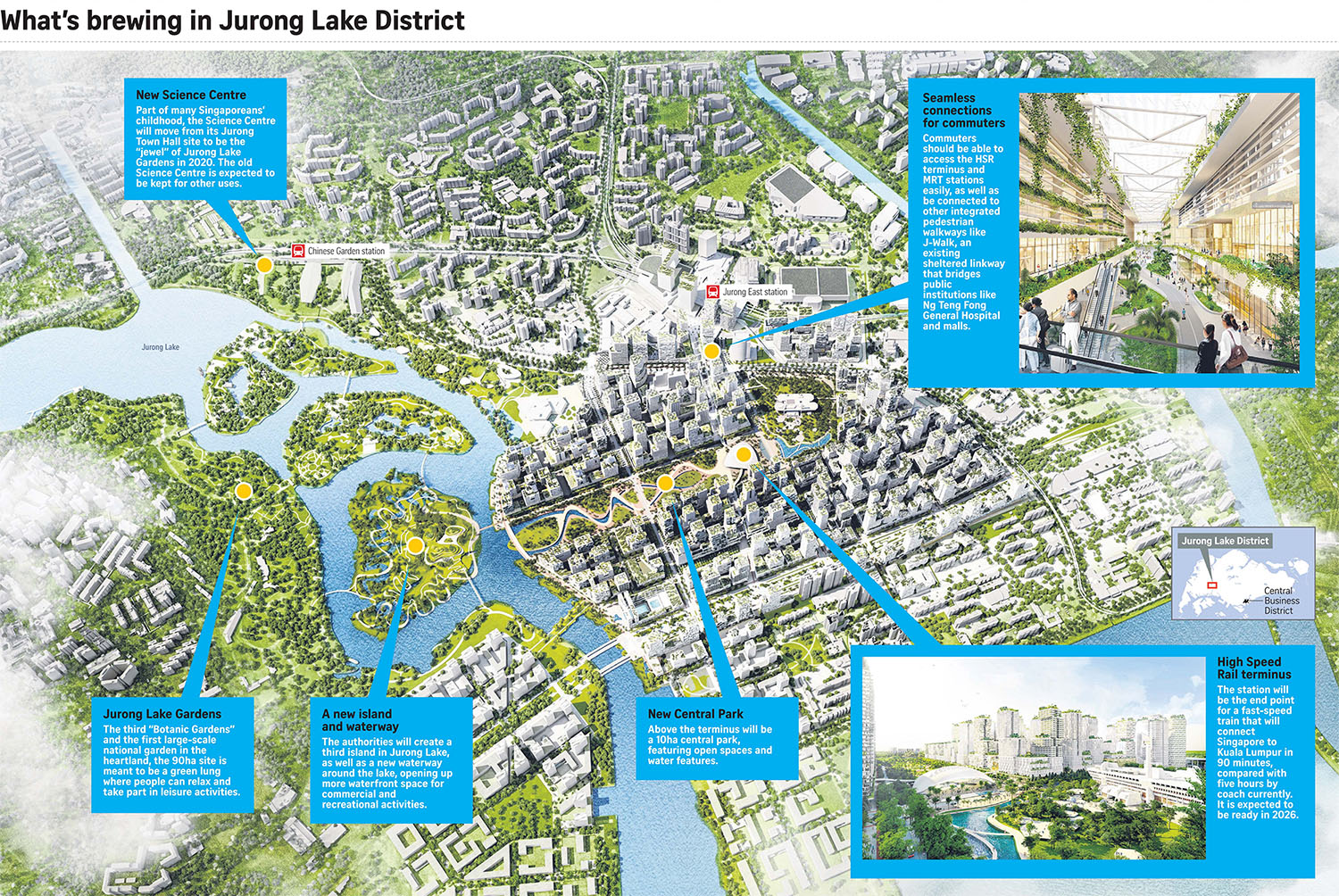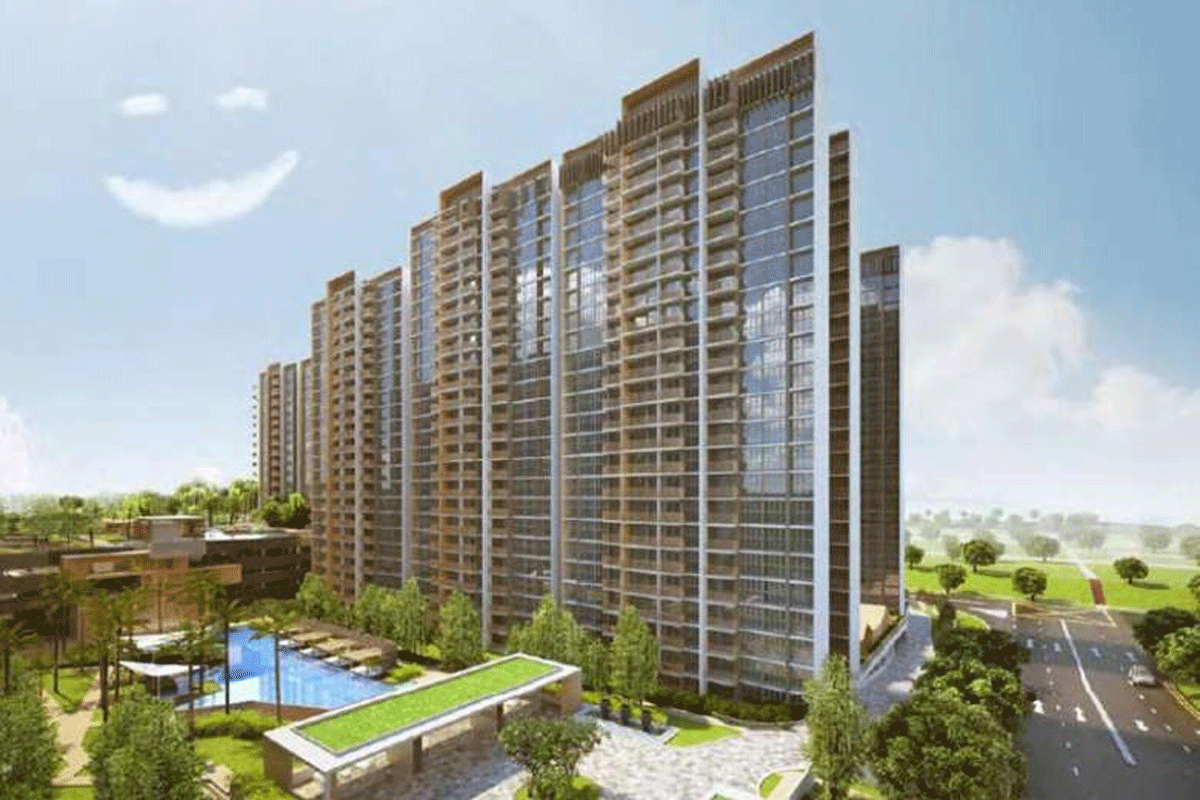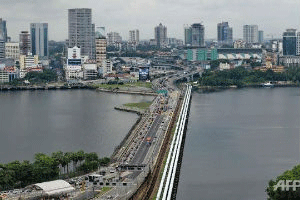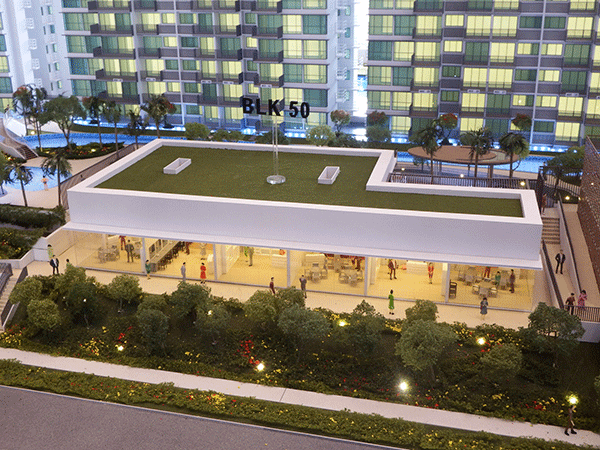Jurong Lake District - The way to become a boom town from a backwoods.
Singapore has thrived by betting big on future trends that make or break economies, whether in air or sea transport, water sustainability or urban development. The Republic tells the world how to become the top leading air hub, the transshipment hub, then a model liveable city. In the last of a three-part series on major infrastructure projects, Insight looks at plans to transform Jurong into Singapore's second Central Business District.
A few years ago, the developers as well as residents, when talking about Jurong's transformation to be a vibrant business district with pockets of tranquility, it always matched with the incredulity.
Yet today, long-time Jurong East resident Aimee Saw, 62, can point to an accelerated momentum in the Government's efforts to not just revitalise the area, but also to turn it into Jurong Lake District (JLD), the nation's second Central Business District.
The retired secretary says: "In the 60s and 70s, there wasn't much here besides factories and a few shops.
"But suddenly, in the last 10 years, you have so many new shopping centres and a big hospital, and people say there will be more to come. It's good to know Jurong is not forgotten."
In 2008, the blueprint for the Jurong Lake District transformation with the area around Jurong East MRT station was unveiled officially. Then, over next 10 to 15 years, Jurong will become a lakeside destination for both leisure and business.
10 years later, a draft masterplan was launched in August this year by Urban Redevelopment Authority with the ambition to elevate the JLD to be a second CBD, as well as a sought-after living hub.
Make the supply for over 100,000 new jobs in many sectors including infrastructure, maritime and technology, as well as a further 20,000 homes come as the main goals of the plan. Given the monumental effort that lies ahead to achieve this, National Development Minister Lawrence Wong has cautioned that JLD will be realised only in 2040 and beyond.
Insight takes a look at the plans.
Jurong's turn in the sun
The South, with the current CBD is where the river and most of the most financial hubs, entertainment points are. Changi Airport in The East features a major gateway and aviation hub.
The south is where the river is, with the current CBD and all its glamour as a financial hub. Also, The north with the Causeway will be shined with the upcoming operation of the Johor Baru-Singapore Rapid Transit System in 2024. Thus, no wonder that Jurong Lake District is considered as a chance for The West to enter the competition.
In 1961, when the struggle between the newly elected People's Action Party and the unemployment rate of 14 per cent had been ongoing, Jurong came as Singapore's first industrial town. Entrepot trade and related services
Moreover, there were an unexpected instability to entrepot trade and related services like banking. Then, the only way to go ahead, as Finance Minister Goh Keng Swee believed is the industrialisation and entrepreneurship.
And Jurong is where he took the first step, swampland cleared for factories construction. The high cost of the massive undertaking, as well as Singapore's lack of track record in manufacturing, led some to label the effort "Goh's Folly".
Even in 1963, when the investors were wary and the industrial estate was ready. Tax incentives and the promise of conducive labour relations were offered, however, and Jurong got its first major company, the National Iron and Steel Mills, in 1964.
It was the lack of amenities and the remoteness that were still Jurong's turn-offs.
Still, Jurong's remoteness and lack of amenities were turn-offs. In 1968, the Jurong Town Corporation (JTC) was given with full rein to develop the infrastructure in Jurong New Town when the JTC Bill was passed.
This resulted in the improvements in bus services and medical facilities, the introduction of social amenities in estates like Taman Jurong, and a 283ha public park named Jurong Gardens or Chinese Garden.
And so the people came, but it was hard to shake off Jurong's association with the boondocks.
Three decades later, it was declared a regional centre as part of a move to encourage more jobs outside the city, with the International Business Park and JTC Summit among the first developments.
But it was not until the 2008 masterplan that people began taking Jurong more seriously. In the last five years alone, four new malls have sprung up - JCube, Jem, Westgate and Big Box. Previously, there was just outlet mall IMM.
As URA chief executive Lim Eng Hwee puts it: "Singapore is an island city and we cannot look inwards… All four regions have to be anchored on the idea of being an international gateway or global hub."
What The Jurong Lake District has
At last, there is a confluence of factors that will propel the JLD into being a second CBD.
For one, Jurong can take the advantage of the ready talent pool that is estimeted over 1 million people in the west. It is said that almost 70 per cent of those living in Central Region, work in the current CBD. It means Jurong-based businesses can tap the workforce that is already there.
It is also situated in the middle of a "tech corridor", starting with business park one-north in Buona Vista, the National University of Singapore, the JLD, the upcoming Jurong Innovation District - spearheaded by statutory board JTC Corporation - and Nanyang Technological University in Jurong West.
Mr Lim also added, there will be numerous chances to make the collaboration with the different talents when being close to major industry players and think-tanks.
Helping to accelerate JLD's transition into a future top-tier destination are firmer plans about two vital components of infrastructure: the Tuas mega port and the High Speed Rail (HSR) terminus.
First announced by then Transport Minister Lui Tuck Yew in 2012, the mega port will consolidate all of Singapore's port operations in Tuas. The first berths are expected to be operational in 2021.
Meanwhile, the HSR that is expected to be ready in 2026, will sit at the heart of the JLD. The terminus will open up Singapore to tap a market more than 10 million strong with the connectivity from Singapore to Kuala Lumpur.
Mr Lim notes: "With that population size, the market allows you to do many things."
And he points to a market beyond Malaysia too. "Eventually, the HSR will be plugged into the rail network in Asia. An analyst told me that the HSR terminus can be seen as the end point of the Belt and Road Initiative," he says, referring to China's game plan to connect Asian and European countries for economic growth.
He adds: "For now, the JLD becomes the gateway to Malaysia. But it will also be the gateway to Asean and the rest of Asia. "So physically and symbolically, it's important for countries that have business in the region to have their headquarters at the end point of that network.
"It's going to be an important selling point."
Planning Parameters
According to the planning authority, in technology and industries propelling an economy, things can change quickly. Meanwhile, it will take several decades for The JLD to come to fruition fully.
As a result, there is flexibility, for sure, for developers to adapt to unpredictable market conditions. How about the starters? The district is zoned as a "white" site that can offer the freedom for developers to erect a range of building types, from commercial to residential.
"This is going to be very different from the downtown CBD," says Mr Lim.
"You won't see pure offices or pure residences. You might see an office with a hotel and shops and residences all in one complex. We don't want the area to be pitch dark after seven, but lively 24/7."
Now the master developers are able to configure a site and adapt to various demands over time with the plans to sell large parcels by URA. "For the first phase, you'd want some critical mass and good connectivity - a master developer makes sense," says Mr Lim.
"That's not to say the whole JLD will have one master developer, but we will do so one at a time and see whether it continues to make sense as we go forward."
While he could not share a more definite timeline about when to expect key JLD milestones, citing the uncertainty of market conditions, Mr Lim reiterated that if there were any priorities, "we would want to get the developments around the HSR up first".
He also added that if we were serious (about the JLD), in the next few years, there will be something for us to do with. This can come to awareness that the tenders for land parcels in the next 2-3 years could be out.
Unique Characters
Much has been said about the JLD's capacity to add about nine million sq ft of office space - more than five times the current stock in Jurong, and about one-eighth of the existing 80 million sq ft of office space available.
However, it is the district's abundance of "green and blue spaces" that is in the form of expanded lakes and parks that comes as the major plus. There will be an addition of 16ha for new parks and open spaces. The the total can be over 100ha.
Some of this will be in the form of a large central park above the HSR terminus, and a lot more greenery will be integrated into building surfaces, or what the URA has called a "green carpet".
"The green will be very visible, and it will be the most intensive vertical greenery you will see. Visually, it will be a different feel when you come here," says Mr Lim.
New waterfront spaces for recreational and community activities will be added with an upcoming waterway to create a third island on Jurong Lake. As Mr Lim said, it is the Government's plan to introduce water elements into the green corridor.
"The 'third Botanic Gardens' that NParks is building in JLD will give the western region a much-needed open space - the east has East Coast Park and the downtown area has two Botanic Gardens (the other being Gardens by the Bay)," he says. "The west doesn't have anything that's significant yet, and residents will look forward to this."
In addition, its car-lite strategy is another considering key feature, where planners are targeting eight in 10 rides in the district to be made using public transport, buses-only lanes and carpark hubs have to be set aside to reduce the availability of nearby carpark spots.
This is higher than the current public transport mode share of 66 per cent across Singapore, as well as the 2020 target of 70 per cent. They have also proposed an off-site centre for trucks to consolidate their deliveries to minimise heavy traffic in the area, critical for an area plagued by heavy congestion.
Challenges Ahead
"Singapore may be biting off more than it can chew" is the concern of some obeservers. Mr Alan Cheong, The research head of consultancy Savills Singapore, argues that JLD is "dependent on so many moving parts" that it risks never taking off.
For instance, the completion of the HSR may be delayed, and it is unclear whether foreign developers or companies can be persuaded to take a risk in Jurong instead of the current CBD.
This may have a knock-on effect on the economic sustainability of a district predicated on such a long runway, he says.
"By the time you get to 2040, you'll have an aged population, which brings about its own problems that you don't know if you can keep under control," he adds.
But many more are optimistic.
MP Foo Mee Har - who oversees Ayer Rajah division in West Coast GRC, with the JLD separated by the AYE - says her residents are in the "sweet spot" of enjoying all the amenities the JLD currently offers, and yet are not affected by road congestion in the area.
But she notes that if planned road works to alleviate congestion go through, then her ward will be even more integrated. "The sooner the road problem is solved, the sooner we will feel more connected to JLD, even if the distance hasn't changed," she says.
Keeping The Bustle Moving
The Tan family faces a quandary every morning: How best to get their 17-year-old daughter to school? Software businessman Aaron Tan, 51, can spend up to 40 minutes being stuck in traffic while ferrying his daughter to Victoria Junior College in the east from his Jurong East home.
In rush hours, it is packed when she rides on the East-West MRT line. His insight is that he just wanted her to get some extra time and space to study or sleep, not guarantee a seat.
Aware of MRT trains annd the crowded roads, the authorities have plans to improve access and lighten congestion in the future Jurong Lake District (JLD). They will introduce, in the short-term, a new road to the Ayer Rajah Expressway (AYE) to divert traffic from roads such as Jurong Town Hall Road.
"We want a road that will connect all the traffic, let that bypass the JLD and discharge everything to the AYE. Once we do that, we can even size down Jurong Town Hall Road, which means that traffic will be even lighter than today," he says.
"We won't see this happen overnight," he adds. "But if you want to see 30 per cent of the district developed, then the road has to be in place."
The larger, ambitious plan is to shift people's reliance on cars towards public transport.
Mr Lim notes the heavy commuter traffic originating in Jurong East, but adds that the authorities are working hard to create extra capacity. The Downtown Line, for example, has absorbed about 10 per cent of commuters using the North-South and East-West lines.
The accessibility across the island or within the area will also be improved with Cross Island Line and the Jurong Region Line, which will be ready by 2025 and 2030 respectively.
"In terms of public transport, when it's fully built up, this infrastructure will make a huge difference," he says. To further encourage people to go car-lite, on-demand driverless buses are expected to ply dedicated public transport-only roads.
By consolidating deliveries off-site, the URA is also looking to cut down the number of delivery trucks in the district during peak hours by at least 65 per cent.
Nanyang Technological University senior transport research consultant Gopinath Menon says the plans are in line with the goal to have zero growth in the vehicle population.
The challenge is making sure that public transport alternatives are viable and reliable, he adds. "Right now, if you haven't bought a car yet, there are plenty of alternatives.
"But can we get it to the stage where if you have a car, you can be convinced to give it up?" he says.



